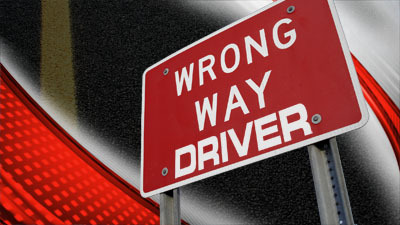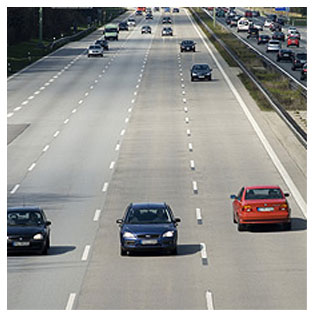
 Over the past month or so there have been numerous reports of wrong-way drivers on highways both locally and throughout the country. Just last week during the evening commute I encountered a wrong way driver on a busy multi-line, one-way street in Downtown Providence. Luckily we were not traveling at highway speed and all had the time to avoid a crash.
Over the past month or so there have been numerous reports of wrong-way drivers on highways both locally and throughout the country. Just last week during the evening commute I encountered a wrong way driver on a busy multi-line, one-way street in Downtown Providence. Luckily we were not traveling at highway speed and all had the time to avoid a crash.
According to the Fatality Analysis Reporting System (FARS), the number of fatalities caused by wrong-way driving ranges between 350 and 500 per year, which accounts for about one percent of traffic fatalities in the United States. The average economic loss due to wrong-way crashes in the U.S. is over $2.38 billion dollars per year.
 Many times, bad road conditions due to ongoing maintenance work or poor weather can put a driver on the wrong side of the road. Most often, wrong way crashes are caused by drivers who are under the influence of alcohol or drugs. There are also other reasons for wrong way crashes, such as passing of vehicles, lane departure by distracted drivers, and failing to negotiate curves. The lack of signs with a confusing or unfamiliar traffic pattern can also lead to someone driving the wrong way. Of course, human error is still a major cause of wrong way accidents – and automobile accidents in general. According to Bob Joop Goos, chairman of the International Organization for Road Accident Prevention, human error accounts for over 90 percent of automobile accidents.
Many times, bad road conditions due to ongoing maintenance work or poor weather can put a driver on the wrong side of the road. Most often, wrong way crashes are caused by drivers who are under the influence of alcohol or drugs. There are also other reasons for wrong way crashes, such as passing of vehicles, lane departure by distracted drivers, and failing to negotiate curves. The lack of signs with a confusing or unfamiliar traffic pattern can also lead to someone driving the wrong way. Of course, human error is still a major cause of wrong way accidents – and automobile accidents in general. According to Bob Joop Goos, chairman of the International Organization for Road Accident Prevention, human error accounts for over 90 percent of automobile accidents.
There are design changes and systems that can reduce the number of wrong way crashes. The State of Rhode Island is implementing a system that will alert State Police and the driving public of wrong way drivers on our highways.

The new detection systems will sense if a driver has entered a highway off-ramp and activate a series of flashing signs. The system will also notify the Rhode Island State Police that someone is driving the wrong way on the road, take a picture of the vehicle, and display a message on overhead electronic message signs to warn other drivers in the immediate area. Nationally there are several countermeasures that are currently being used or recommended to reduce wrong way driving accidents.
The countermeasures include traditional signing and pavement marking techniques, innovative signing and pavement marking techniques, geometric modifications (e.g., ramp and road design changes), and intelligent transportation system (ITS) applications.
States such as Florida utilize technology similar to that of Rhode Island, (signs, flashing lights, warnings, and police notification). While effective, developing a system that better prevents wrong way crashes – as well as other accidents – would save numerous lives.
One idea is to utilize technology that is currently used by OnStar – called Stolen Vehicle Slowdown – which allows the company to remotely send a signal to your car’s engine management system and reduce engine power gradually. This results in the vehicle coming to a stop. The technology is currently used if an OnStar subscriber’s vehicle is stolen but should be able to also be used to slow wrong way vehicles down. In addition to “slow down” technology, coded emblems could be placed on a vehicle’s front windshield that would activate a warning system and notify authorities if it passes wrong way signage. The emblems could also activate the vehicle’s slowdown system.
Aside from the systems being used in states like Rhode Island and Florida, there aren’t many new technologies being introduced as it relates to wrong way driving. It’s time that we think outside – actually rid ourselves of – the box and use technology to help prevent wrong way collisions. In addition to preventing wrong way collisions, utilizing advanced technology could reduce other types of automobile accidents and save countless lives.

Forward Focus explores how entrepreneurship, innovation and ideas are changing the way we see and do things and how they can move us and our communities forward.
The author, Brian Chicoine, is a New Hampshire native who merges his passion for entrepreneurship and innovation with his love of new and bold ideas to bring the reader a fresh perspective on the way things are done. Brian writes from the perspective that nothing is impossible and loves to ask “why not” and “what box?”
Brian was born in Nashua and was raised in Raymond and Manchester. A couple years after graduating from West High School, Brian attended college in Manchester. Brian loves the ocean and wanted to experience life in a Southern New England city so moved to Providence to complete his undergraduate degree. After graduation, Brian and his new wife Jackie lived in Manchester for about five years and had two sons. Brian and his family then returned to Jackie’s home state of Rhode Island.
Brian and Jackie live in Providence where they are raising their two “no box thinkers and doers” and are building a multi-venture company.
 You’re one click away! Sign up for our free eNewsletter and never miss another thing.
You’re one click away! Sign up for our free eNewsletter and never miss another thing.







